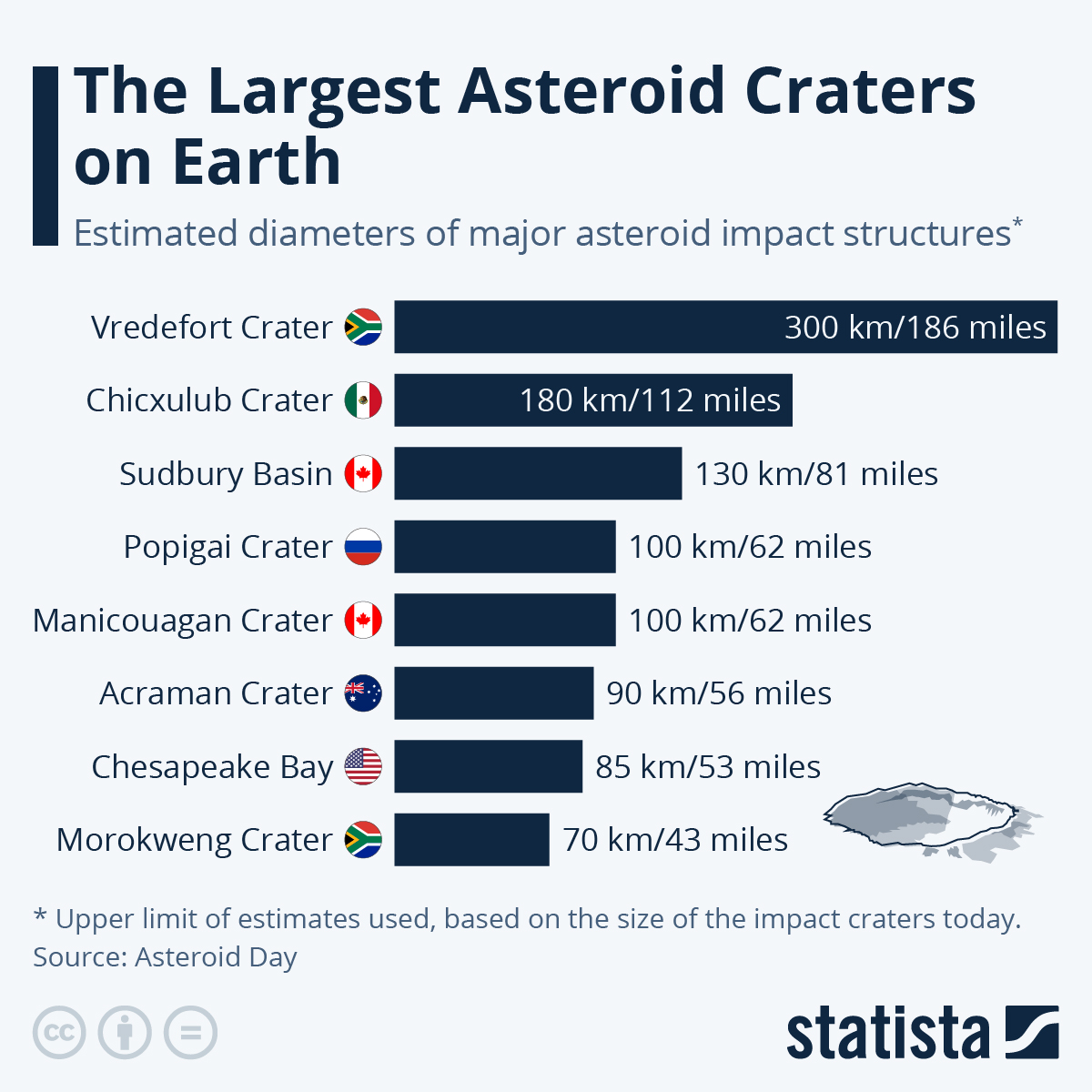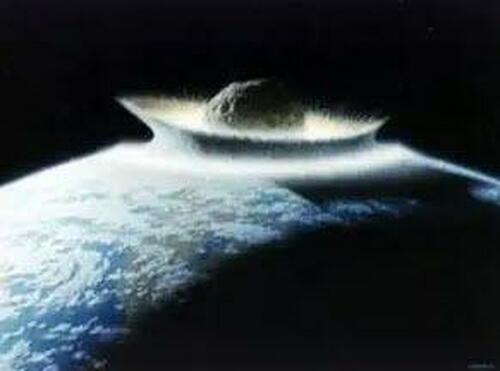(Oui bon d'accord, mais si ces météorites étaient tombées longtemps avant l'apparition de la vie sur Terre, que les datations soient fausses, et avaient justement provoqué cette apparition, alors qu'est-ce qui a bien pu faire disparaître les dinosaures ? La terre avec les dinosaures a eu son époque de gigantisme, depuis, elle en est plutôt dans une période de nanisme. Est-ce que par hasard la gravité aurait quelque chose à voir, est-ce que la gravité était moins lourde, moins pesante sur les épaules avant, ce qui a autorisé justement ce gigantisme ? note de rené)
These Are The Largest Asteroid Craters On Earth
June 30 marks Asteroid Day, a day dedicated by the United Nations to raising awareness around the risks of asteroid impacts.
The following chart, via Staista's Anna Fleck, uses estimates from the Asteroid Foundation’s Asteroid Day portal to provide a round up of eight of the largest known asteroid impact craters on Earth.
You will find more infographics at Statista
First on the list - and the largest - is the Vredefort Crater, located not far from Johannesburg in South Africa. The crater was formed an estimated two billion years ago and today has an estimated diameter of some 300km.
Next up, is the Chicxulub Crater, located in the Yucatán Peninsula of Mexico. The Chicxulub impactor, as the asteroid that created it was known, is presumed to have wiped out the dinosaurs some 66 million years ago. The asteroid itself is thought to have been approximately 10 km in diameter and today its impact crater is approximately 180 km across.
The Popigai Crater in northern Siberia, Russia was created some 35 million years ago and today has a diameter of approximately 100 km. According to Asteroid Day, the area is now rich in diamond reserves thanks to the region having been heavy in carbon, which turned into the precious stone under the heat and pressure of the impact.
Three major impact craters in North America also make it onto the list: two in Canada (the Sudbury Basin in Ontario and the Manicouagan Crater in Québec) as well as one in the United States (Chesapeake Bay in Virginia). The latter is considered one of the best-preserved “wet-target” or marine impact craters worldwide.
To get a sense of scale, according to the Asteroid Day platform, many of these asteroid impact craters are so immense that they are only noticeable when using satellite imagery.
Different sources rank global craters with other metrics, for instance depending on the size of the impact crater when it was created rather than today, when it might have changed size due to erosion.


Aucun commentaire:
Enregistrer un commentaire